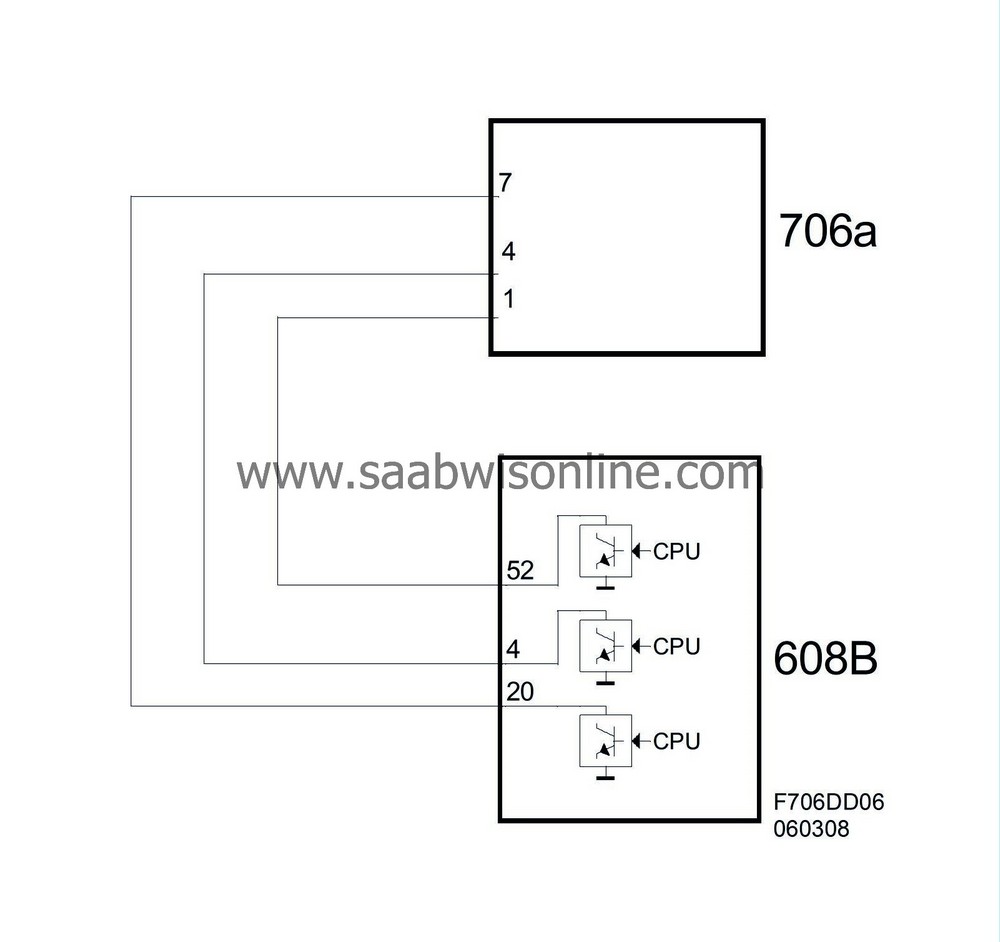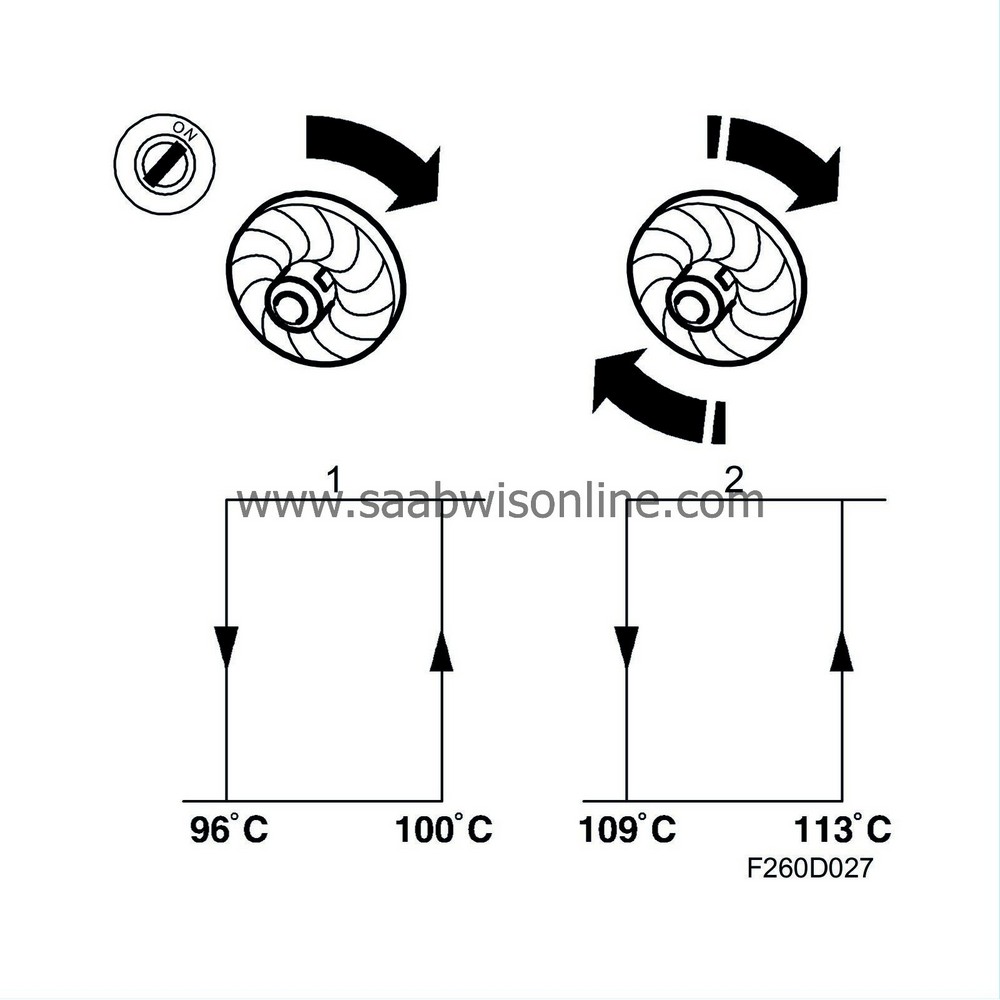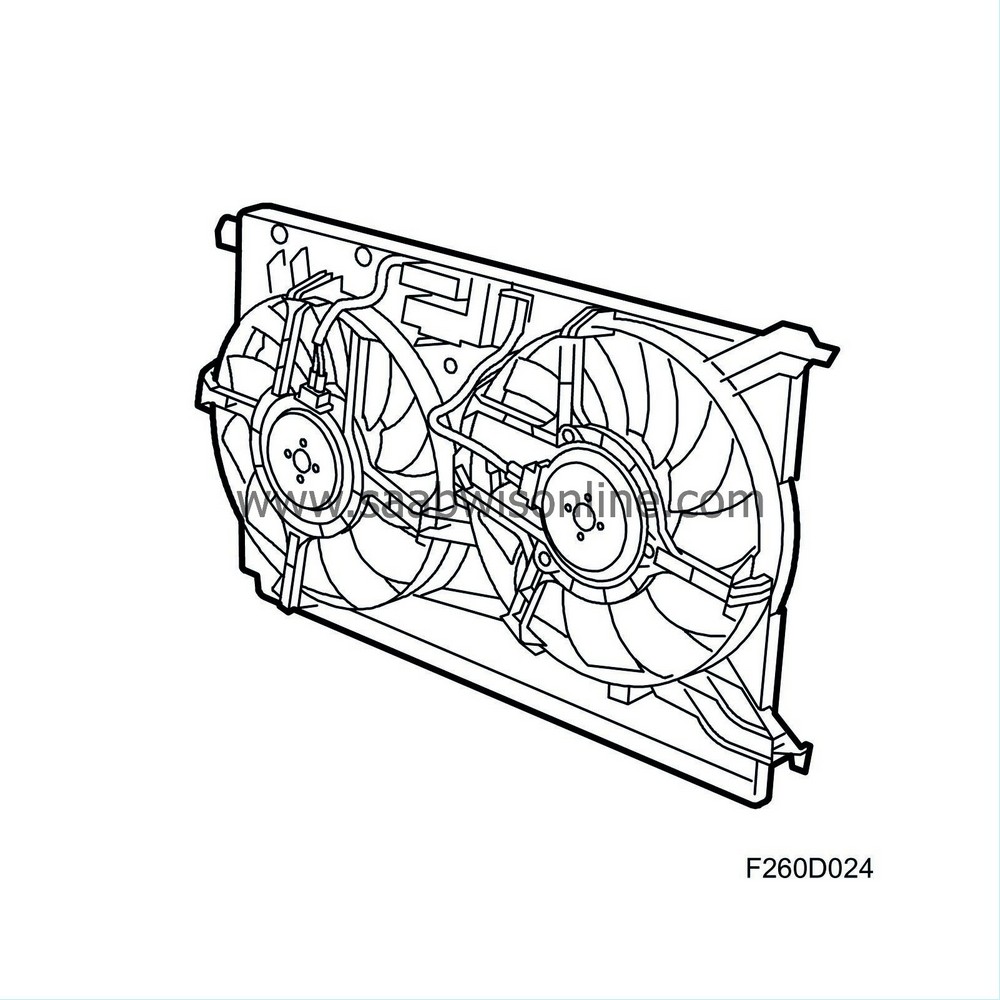PRE-RELEASE
Detailed description, radiator fans
| Detailed description, radiator fans |
| Stage 1 | Both fans running slowly | Fan 1: 44% of max. speed | Fan 2: 44% of max. speed |
| Stage 2 | Both fans run at moderate speed | Fan 1: 70% of max. speed | Fan 2: 64% of max. speed |
| Stage 3 | One fan runs at max. speed | Fan 1: 70% of max. speed | Fan 2: 100% of max. speed |
| Stage 4 | Both fans run at max. speed | Fan 1: 100% of max. speed | Fan 2: 100% of max. speed |
The radiator fans have their own relay box. Communication between the ECM and fan relay box is enabled by wiring via the UEC.
The fans are controlled by ECM through the following input signals:
| • |
Coolant temperature
|
|
| • |
A/C pressure
|
|
| • |
Exhaust temperature (calculated in ECM)
|
|


Radiator fan relay box (706) is supplied with +30 from UEC to pins 3 and 6, and is grounded to G30A from pins 5 and 2.
3 leads lead from the ECM via the UEC to the relay box. These leads are connected to pins 1, 4 and 7 on the relay box. The four fan speeds are controlled by the grounding of these three leads.
The radiator fans start in the following cases:

| 1. |
Temperature logic:
Fan speed 1 is engaged when the coolant temperature reaches 102° C and is disengaged when the temperature has dropped to 98° C. Fan speed 2 is engaged when the coolant temperature reaches 105° C and returns to fans speed 1 when the temperature has dropped to 101° C. Fan speed 3 is engaged when the coolant temperature reaches 112° C and returns to fans speed 2 when the temperature has dropped to 108° C. Fan speed 4 is engaged when the coolant temperature reaches 116° C and returns to fans speed 3 when the temperature has dropped to 112° C.
|
|
| 2. |
A/C pressure logic
Stage 1 on the radiator fans starts at an A/C pressure over 1100 kPa and stops at a pressure below 800 kPa. Stage 2 on the radiator fans starts at an A/C pressure over 1700 kPa and returns to stage 1 at a pressure of 1400 kPa. Stage 3 on the radiator fans starts at an A/C pressure over 2000 kPa and returns to stage 2 at a pressure of 1800 kPa. Stage 4 on the radiator fans starts at an A/C pressure over 2300 kPa and returns to stage 3 at a pressure of 2100 kPa.
If the temperature of the automatic transmission fluid rises to 140° C, the radiator fans will start at speed 4, irrespective of the temperature of the engine or pressure of the A/C system. Once the transmission temperature has dropped to 130° C, the fans will return to obeying the normal logic.
If the temperature signal is missing, the radiator fans will run constantly at full speed, i.e. stage 4. |
|
| Operation with ignition ON |

With the ignition switch turned to ON, ECM will use the following information on the bus:
| • |
Coolant temperature (bus from ECM)
|
|
| • |
A/C pressure
|
|
| • |
A/C system status (active/inactive)
|
|
| • |
Exhaust temperature (calculated in ECM)
|
|
This information is used by ECM to control starting and stopping the radiator fans.
Idle speed compensation
In order to maintain a constant idling speed when the radiator fans are turned on or off, there is a 3 second delay before the fans are engaged. During this time, the engine control module will start to compensate for the increased load so that the idling speed will not drop when the radiator fans start.Current consumption
Approximate radiator fan current consumption at different speeds:| Stage 1 | 29A |
| Stage 2 | 43A |
| Stage 3 | 55A |
| Stage 4 | 65A |
The maximum current for speed 4 must not exceed 65A.
| Operation with ignition OFF |
ECM regulates the fans when the ignition is off based on coolant temperature or how the exhaust temperature has been previously.
Note that all afterrunning occurs at speed 2.
| 1. |
Based on coolant temperature:
|
|
| 1.a. |
If the temperature is <103°C when the ignition is off, the radiator fans remain off.
|
| 1.b. |
If the temperature is >103°C when the ignition is off, afterrunning operates max 420 seconds or until coolant temperature is below 103°C.
|
| 2. |
Based on calculated exhaust temperature
:
Exhaust temperature is continually calculated in ECM. When certain temperature levels are exceeded when the ignition is off, afterrunning operates. Afterrunning operates in the following cases: |
|
| • |
The calculated exhaust temperature has exceeded 700°C for 2 minutes without subsequently falling below 700 °C for 1 minute.
|
| • |
The calculated exhaust temperature has exceeded 750°C for 1 minute without subsequently falling below 750 °C for 4 minutes.
|



